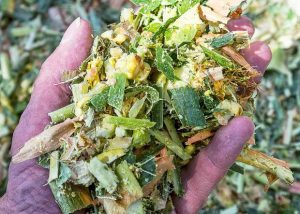
The decision to start harvesting corn silage on a given day is one of the most economically impactful decisions of the year for area livestock farms. UW-Madison, Division of Extension, is assisting area farms through a series of weekly corn silage moisture monitoring events.
Samples will be chopped at the times/places below and then analyzed at Dairyland Laboratories. Analysis is sponsored by Marinette, Oconto, and Shawano County offices of UW-Madison, Division of Extension and the Shawano County Forage Council.
Sampling Events:
+ September 3 (Wed.), Sept. 10 (Wed.), Sept. 16 (Tues.); Sept. 24 (Wed.) & Oct. 1 (Wed.)
– 8:30 to 9:30 a.m @ Fendryk Farms, in front of freestall. Use driveway on 25th Road, just
south of Mar. Cty. Hwy. P.
– 10 to 11 a.m. @ Peterson’s Dairy, 6336 Goatsville Road, Lena; (in front of freestall at SE
corner of farmstead)
– 11:45 a.m. to 12:45 p.m. @ Brown Star Farms, 10279 Hwy. 22, Gillett (adjacent to the slurry
store at NE corner of farm)
– 1:30 to 2:30 p.m. @ Tauchen’s Harmony Valley, N3399 S Broadway, Bonduel, east of feed
bunkers, use 3rd driveway south of 29.
These opportunities are meant to be a chance to get your silage, snaplage, or early HMC samples tested in a relatively convenient manner. Also take advantage of other opportunities that you may have through your agronomist, nutritionist, or by conducting your own sampling and testing.
Collecting a Good Sample Sample collection is very important to getting good test results. The first step to collecting a good sample is to think about the different fields and/or varieties that you want tested. Each variety will mature and dry-down differently, and there are always differences from field to field, so plan on sampling most of the fields that you are thinking about ensiling this year. When collecting the actual sample plants, collect your sample according to the variability in the field. If the field is pretty consistent, collect five plants in a W-shaped pattern from the area being sampled. If the field is variable, collect more plants and collect plants in proportion to the type of growth/plant stature/maturity you are seeing. This should often be soil type-driven. So, if a field is 25% one soil type and 75% another, collect 1 or 2 stalks from the smaller area and 3 or 6 from the other. Try to collect samples just before they will get chopped. If that isn’t feasible, keep them in the shade, covered if possible.



